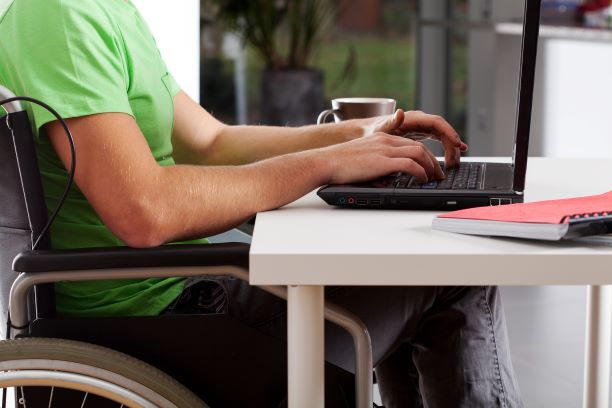Although it’s unlikely to be intentional, all too few buildings are designed with full accessibility in mind, and this can be especially problematic w
Although it’s unlikely to be intentional, all too few buildings are designed with full accessibility in mind, and this can be especially problematic when it’s somewhere a disabled individual will visit every day. More than a quarter of workplaces fail to cater for those in wheelchairs, while less visible conditions like learning difficulties and visual or auditory disabilities often go unconsidered by businesses altogether.
With one in five working adults in the UK having some form of disability, office accessibility should clearly be a key priority. Not only can failing to consider those with disabilities alienate certain team members and render them unable to work properly, it could also see companies fall foul of regulations like the Equality Act 2010. All of this should encourage you to strive to make your workplace as accessible as possible. Following these tips could offer a positive start.
Adjust the property
Perhaps the most obvious way to accommodate disabled people is altering your office’s physical features to make it easier for them to access or use it. There are multiple ways to do this, including:
Installing lifts
It is essential that offices with multiple floors have a lift, otherwise those in wheelchairs will be unable to use the whole building. This requirement is stipulated in the Equality Act 2010, though lift providers Premier Lift Group note that employers should also follow the stipulations within the DDA lift requirements that preceded the Equality Act. This gave “definitive specifications of the building features which provide access to disabled people”, including the provision of audible and visual information and ensuring lift controls are within a reachable distance for every passenger.
Fitting disabled toilets
Disabled toilets are also a necessity, enabling those with disabilities to use the bathroom safely and independently. The Workplace (Health, Safety and Welfare) Regulations 1992 states that: ”Suitable and sufficient sanitary conveniences shall be provided at readily accessible places.” The Building Regulations are also followed by businesses when installing disabled toilets, stipulating that disabled toilets must be set at a raised height, with an emergency assistance alarm system and supporting grab rails in place.
Creating a quiet space
Not every disability is visible, so altering a building’s physical features to accommodate disabled people won’t necessarily only require large-scale changes. Simply creating a quiet space for those with learning disabilities or mental health issues can fulfil this requirement This enables individuals to take a break from the hustle and bustle of the office, which can become overwhelming at times. The quiet room can also feature comfortable seating so that people with conditions like arthritis can sit and rest.
Other ways of adjusting the property for disabled people include installing accessible signs (such as those which are Braille tactile), extra lighting and ventilation, and automatic doors.
Change the way things are done
Another critical way of making your workplace more accessible is to change the way things are done generally. Examples include:
Supplying assistive devices and software
Certain assistive devices and software can make life much easier for those with disabilities. For instance, screen reader programs like JAWS or HAL enable blind people to use computers by converting text and icons to speech, while magnification software enlarges text and graphics displayed on monitors for the visually impaired. Adapted keyboards are another great way of catering to disabled people, offering larger or colour-coded keys for visually impaired employees, or compact sized ones which can fit on a wheelchair tray.
Modifying procedures
Certain business procedures may put disabled people at a disadvantage, such as giving somebody with restricted manual dexterity a written test, when an oral test instead would be more appropriate. Other examples include allowing somebody with a learning disability to have a non-colleague accompany them to a meeting about a grievance, and giving disabled staff extra breaks throughout the day.
Hiring support staff
Sometimes, bringing support staff into your workforce can make a world of difference to disabled team members. For instance, a sign language interpreter can make it possible for deaf people to work for your business, while a reader can do the same for blind people. Another example is a dedicated autism support professional, who can help employees with autism settle in much quicker.
Build awareness around disabilities
Your own staff also have a massive role to play in making your workplace accessible. By considering their disabled colleagues’ needs, they can help to foster a culture of inclusivity. Not everyone knows how to interact with disabled people or what their needs are, which is why improving disability awareness among staff is vital. This will give them the appropriate tools to be more mindful of their colleagues and open their eyes to issues they may not have otherwise thought about.
Formal training is recommended to really hammer home these considerations. One example is MTD Training’s disability awareness course which gives advice on subjects like improving communication with disabled people, and removing barriers for them. Building awareness in this way ensures your staff aren’t learning on the job about issues which affect those with disabilities. This also dispels any unconscious biases they may have before they even interact with disabled colleagues, and helps them integrate such individuals into the company.



















































































































COMMENTS